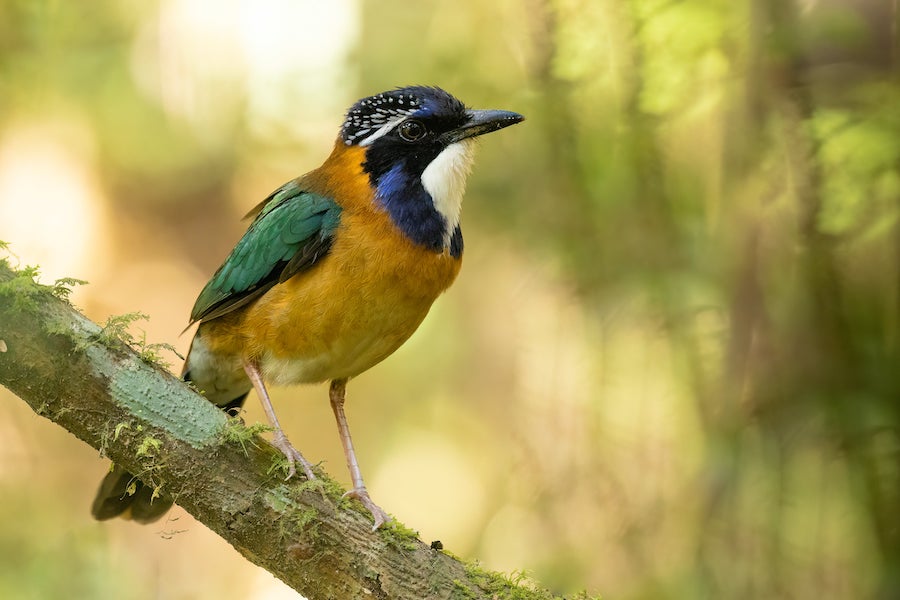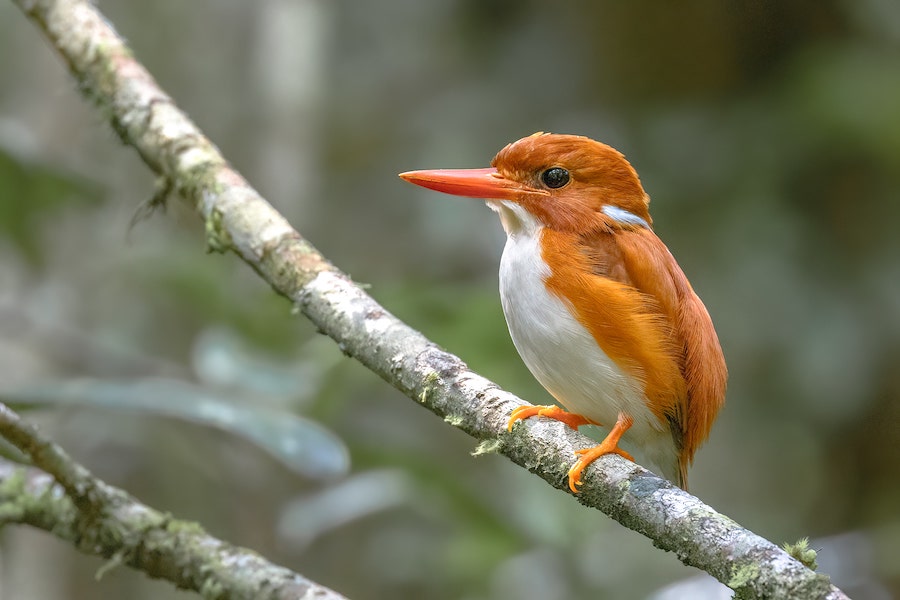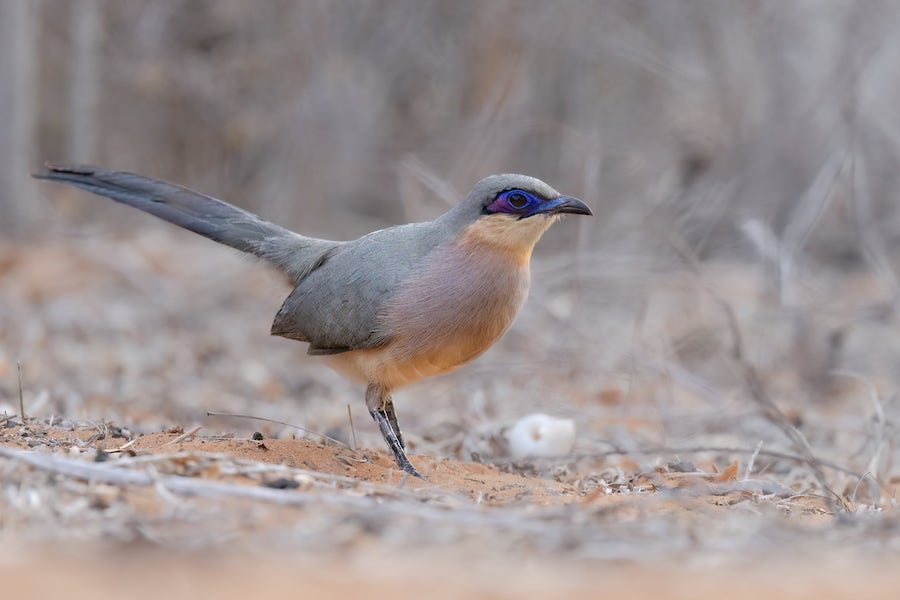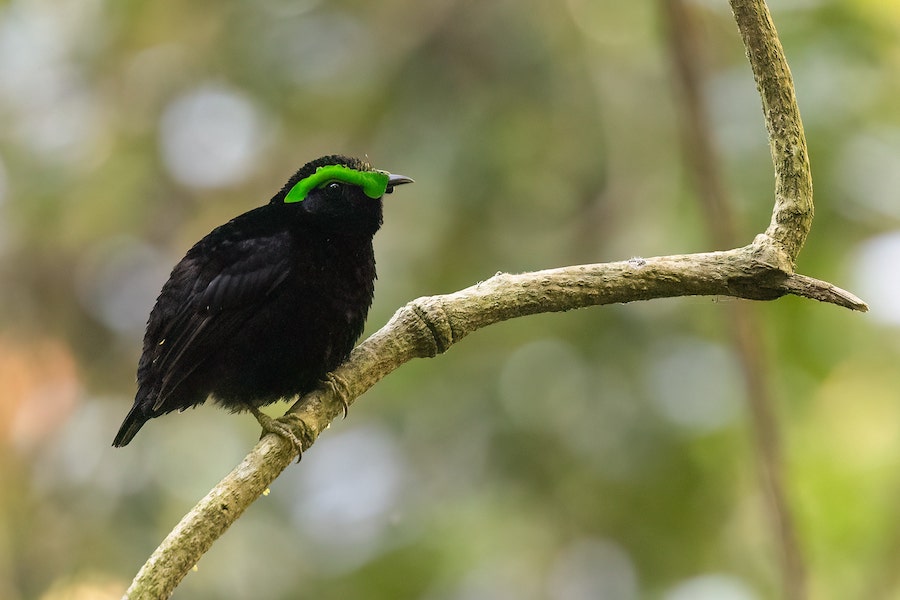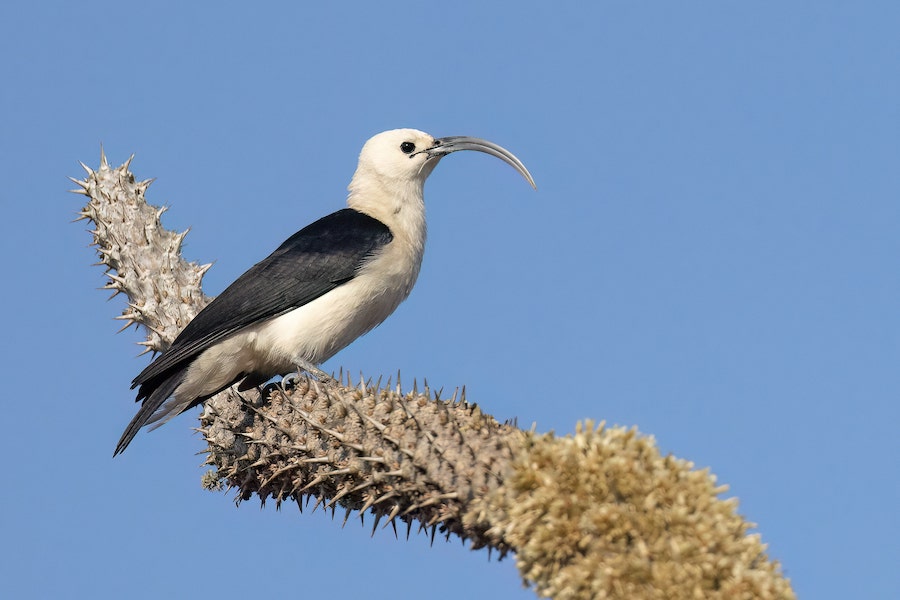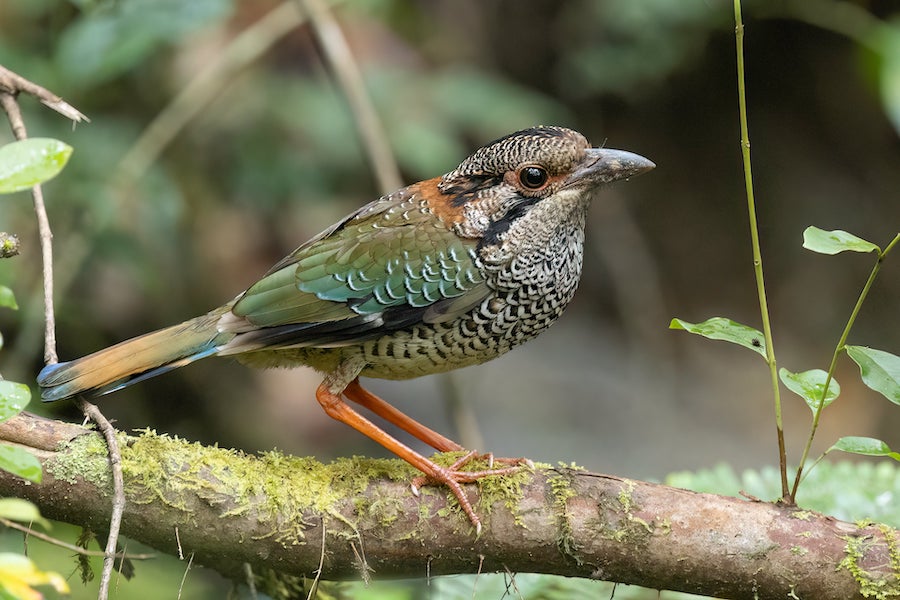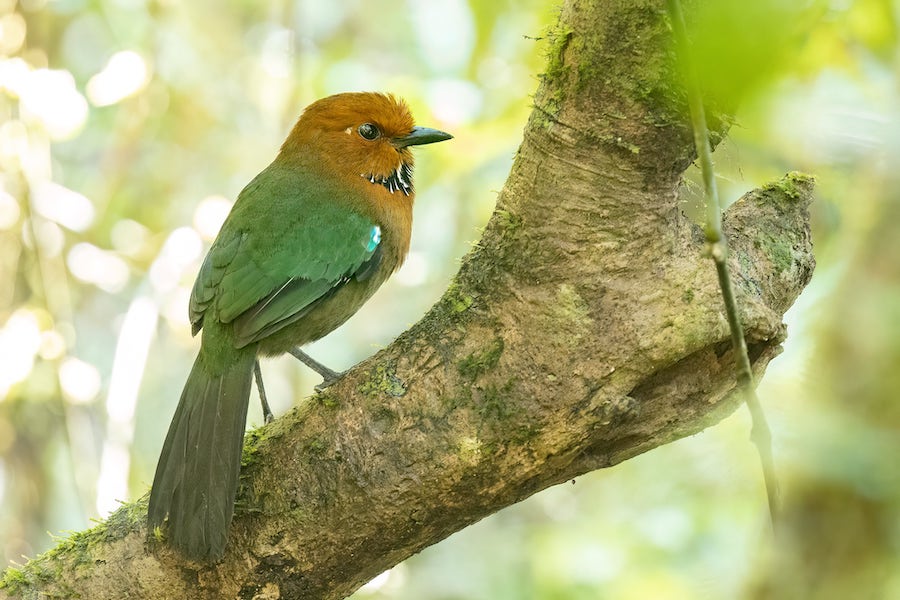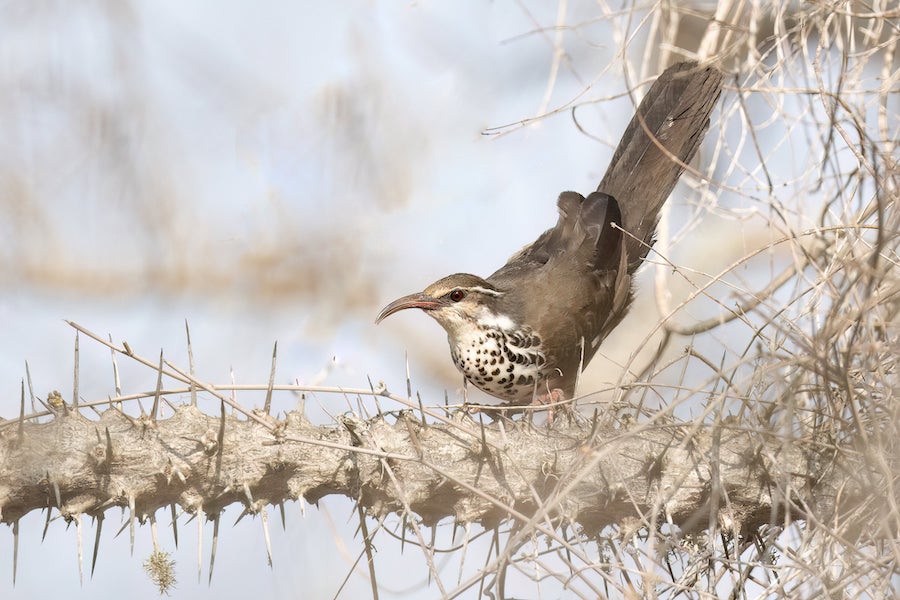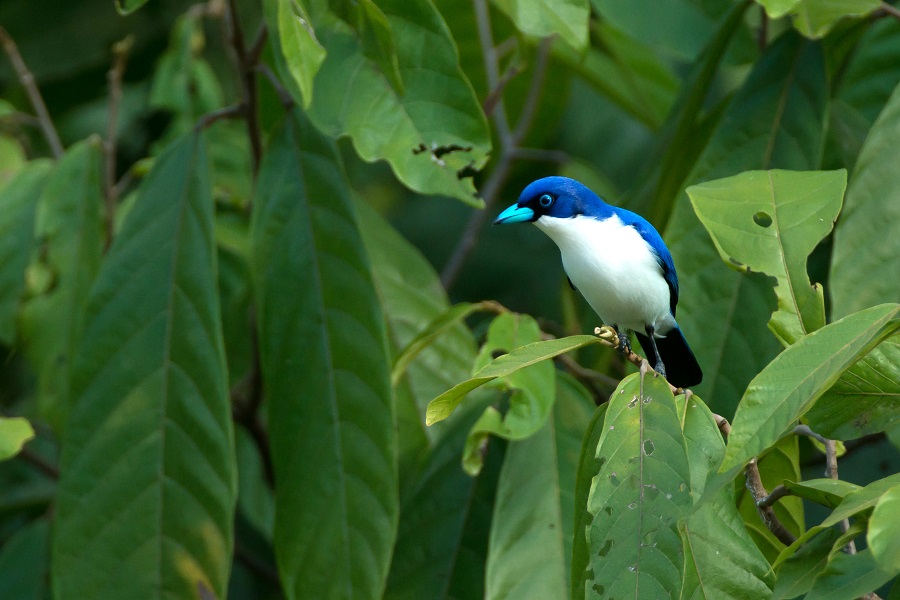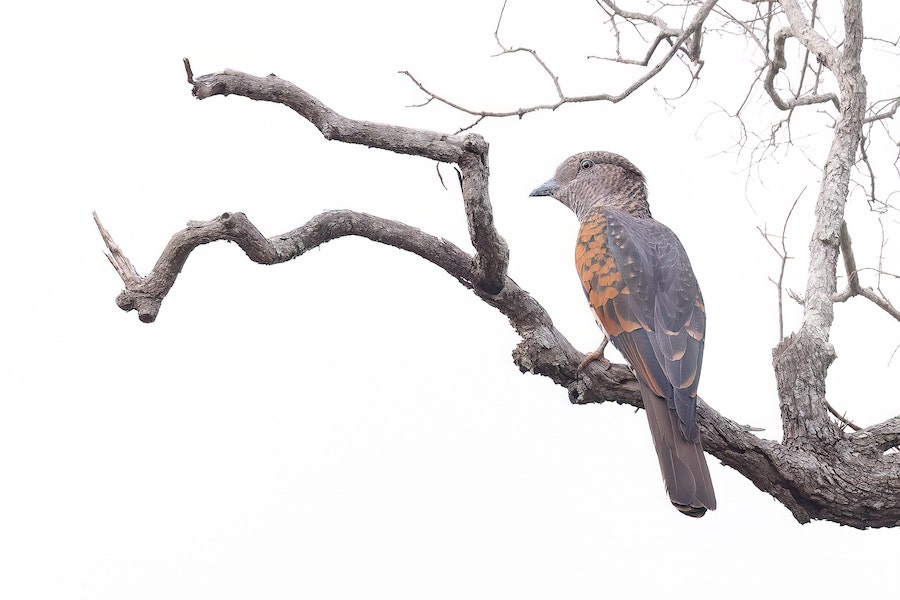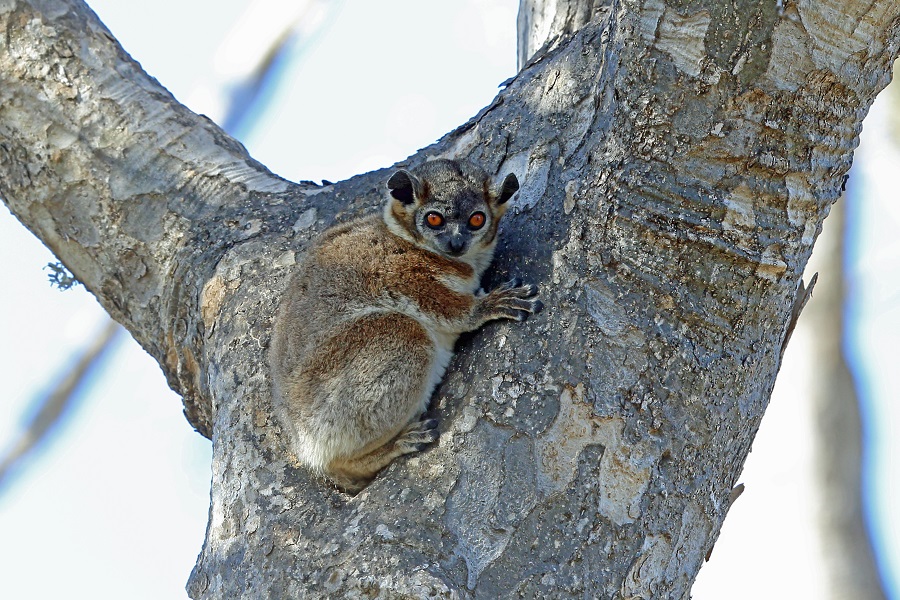Madagascar
Birding on the "eighth continent", covering almost every endemic bird and dozens of lemurs in some of the most unique habitats on Earth! Starting with the superb Schlegel’s Asity in the dry north-west plateau, we move on to the ground-roller forests around Antananarivo before moving across the island sampling every habitat type before reaching the coast, where Subdesert Mesite and Sickle-billed Vanga highlight the last days of the tour. In the end, we will have seen close to 100 endemic birds! There is also the chance to join the leader for lots of optional spotlighting excursions in search of lemurs and reptiles.
Next Dates
15 October - 30 October 2026 (16 days)
Leaders:
Joshua Bergmark
Group Size Limit:
7
Single Room Supplement: $
900 USD
Deposit: $
1500 USD
Price: $
8100 USD
Add a Title
Leaders:
Joshua Bergmark
Group Size Limit:
Add a Title
Single Room Supplement: $
TBD
Deposit: $
TBD
Price: $
TBD
Add a Title
Accommodation:
Mostly comfortable hotels, but there are a couple of nights in more basic rooms with no hot water and the occasional leaky roof!
Walking difficulty:
Generally easy walking and roadside birding, with a few slightly longer forest trails.
Tour cost includes:
All accommodation, main meals, drinking water, internal flights (as stated in itinerary), overland transport, tips to local drivers and guides, travel permits, entrance fees, and guide fees.
Tour cost excludes:
Flights before and after the tour start/end, visa, travel insurance, tips to tour leaders, laundry, drinks, and other items of a personal nature.


Day 1: Our tour starts this evening with arrivals into Antananarivo International Airport (TNR).
Day 2: Driving north to Beamilaka, we will arrive late in the evening. There are chances today for Madagascar Partridge and Malagasy Harrier, which can be tricky elsewhere. Night in Beamilaka.
Day 3-4: The superb Ankarafantsika National Park protects an extensive area of plateau country with dry tropical woodland, while small gullies hold slightly moister forest. It is here that the beautiful Schlegel’s Asity can be found, and we will hope to marvel at the magnificent luminescent wattles of a male! The highly-localised Van Dam’s Vanga and White-breasted Mesite are two other important targets here, along with the newly split Olive-capped Coua, plus Torotoroka Scops Owl and Banded Kestrel. This park also holds many lemurs, including the handsome Coquerel’s Sifaka, Common Brown and Mongoose Lemurs, Fat-tailed Dwarf Lemur, Grey Mouse Lemur, Western Woolly Lemur, Milne-Edwards’s Sportive Lemur, and we might even find the rarer Golden-brown Mouse Lemur.
Not far from Ankarafantsika is Lac Amboromalandy, where an afternoon session will give us a good chance of encountering the Critically Endangered Madagascar Fish Eagle, the localised Madagascar Jacana, Malagasy Kingfisher, Malagasy Pond Heron, and African Pygmy Goose. We will also visit the broad estuary of the Betsiboka River, where a short boat trip will allow us to search for two of Madagascar’s most threatened species: the endemic Bernier’s Teal and Malagasy Sacred Ibis, plus a first chance for Humbolt’s Heron. Nights in Beamilaka.
Day 5: Today, we drive back to Antananarivo and slightly past it towards Andasibe. We’ll stop and look for Madagascan Pratincole at the Mangoro River before reaching our lodgings this evening. Night in Andasibe.
Day 6-7-8: Andasibe-Mantadia National Park (formerly known as Perinet) protects some of the richest rainforest in Madagascar. The park shares many species with Ranomafana, but several of them are much easier to see here! The superb Short-legged Ground-roller and the curious Nuthatch Vanga are two such birds (the latter once considered a true nuthatch, but now understood to be a remarkable example of convergent evolution). We have chances of seeing Madagascar Owl and Collared Nightjar either at day roosts or while spotlighting, while the lovely Broad-billed Roller and White-throated Rail are quite common. In nearby areas of marshland, we will search for Madagascar Rail, Madagascar Snipe, and Madagascar Grebe. Other enticing endemics here include Blue, White-headed, Chabert, Tylas, and Red-tailed Vangas, Ward’s Flycatcher (now thought to be a vanga), Greater and Lesser Vasa Parrots, the turaco-like Blue Coua, and the striking Velvet Asity. The list of additional endemics is long but includes Madagascar Magpie-Robin, Wagtail, Cuckooshrike, Cuckoo, and Spinetail, Malagasy Bulbul, Paradise Flycatcher, White-eye, Brush Warbler, Coucal, Turtledove, Kingfisher, and Kestrel, Malagasy Green Sunbird, Souimanga Sunbird, Crested Drongo, Common Newtonia, Nelicourvi Weaver, Spectacled Tetraka, Green Jery, and Forest Fody. Most of these can also be seen at Ranomafana. Andasibe is our only chance to see Helmet Vanga, however it is not easy at this site and usually involves a very long hike to a distant nest. As such, we cannot guarantee it on this tour. On the mammal front, we are likely to both see (and hear!) the famous Indri, the largest of all surviving lemurs. Diademed Sifaka, Common Brown Lemur, Greater and Furry-eared Dwarf Lemurs, and hopefully the handsome Black-and-white Ruffed Lemur are among the other species we will be on the lookout for. Nights in Andasibe.
Day 9: After some morning birding, it will be mostly a travel day on the slow Madagascan roads as we head southwest for an overnight stop. Driving through the open country, we will keep an eye out for Madagascar Buzzard, Madagascar Kestrel, Malagasy Black Swift, Madagascar Lark, Mascarene Martin, Madagascar Stonechat, Madagascar Cisticola, and Red Fody. We will have an early night tonight and leave predawn to make sure we reach the forest at Ranomafana for sunrise.
Day 10-11: Initially gazetted as a national park after the discovery of Golden Bamboo Lemurs here in 1985, Ranomafana is now known as one of the best forest birding destinations in all of Madagascar. Pride of place among our many targets here are the iridescent Pitta-like Ground-roller and furtive Rufous-headed Ground-roller, two of Madagascar’s most exciting birds. There are many other endemic species here, of course, so we will be listening for Common, Green, Wedge-tailed, and Stripe-throated Jeries, Rand’s and Cryptic Warblers, Madagascar Starling, Madagascar Cuckoo, and the striking Madagascar Blue Pigeon. Our first Cuckoo-rollers might be seen here as they give their dramatic aerial displays while calling wildly. Hitting the trails, we will be focused on Madagascar Yellowbrow, the chunky Pollen’s Vanga, Grey-crowned Tetraka, and the typically vocal Heenst’s Goshawk. At higher altitudes, the astoundingly iridescent Yellow-bellied Sunbird-Asity can be found, while the less impressive Brown Emutail creeps at our feet! The list of additional species we may see here is long, but includes Madagascar Flufftail, Madagascar Cuckoo Hawk, Common Sunbird-Asity, White-throated Oxylabes, Hook-billed Vanga, Forest Rock Thrush, and Dark Newtonia. In a nearby area of damp heathland, we will search in particular for the skulking Grey Emutail, as well as Brown-throated Martin, Madagascar Swamp Warbler, and Madagascar Mannikin. We will have another chance to find Madagascar Snipe and, if we are lucky, we will come across Meller’s Duck. Several species of lemur have been studied here for many years, resulting in the animals becoming unconcerned by the presence of humans and giving us the privileged opportunity of watching them at close range. We have a good chance of encountering Golden, Greater, and Eastern Grey Bamboo Lemurs, Red-fronted Brown Lemur, Red-bellied Lemur, Milne-Edwards’s Sifaka, Brown Mouse Lemur, and perhaps Eastern Avahi. Other mammals may include Eastern Red Forest Rat, Ring-tailed Mongoose, and Fanaloka. Nights near Ranomafana.
Day 12: After a final morning at Ranomafana, we will start the scenic drive towards Isalo. Our first stop at Anja Reserve will allow us to admire some wonderfully tame Ring-tailed Lemurs, and then after reaching the Horombe Plateau, we will be keeping an eye out for the uncommon Madagascar Partridge. We may well also encounter the attractive Malagasy Harrier quartering the arid grasslands. Once at the dramatically beautiful Isalo Massif, an area of contorted limestone pinnacles surrounded by grasslands, we will look for “Benson’s” Forest Rock Thrush on the roof of our hotel! Night at Isalo Massif.
Day 13: Driving further west, we will first stop at Zombitse-Vohibasia National Park, which protects a remnant of what was once a much more extensive forest. The extremely localised Appert’s Tetraka and astounding Giant Coua are our big targets here, along with Coquerel’s Coua, Madagascar Spinetail, Madagascar Hoopoe, and Rufous Vanga. Sometimes, the local guide knows where to find a roosting White-browed Owl or Torotoroka Scops Owl, and we have a good chance of seeing both the charismatic Verreaux’s Sifaka and Hubbard’s Sportive Lemur. Nearing Madagascar’s arid west coast at Toliara, where we will stay overnight, the beautiful Red-shouldered Vanga and Verreaux’s Coua will be at the top of our wishlist for the afternoon birding session. Other new species here may include Madagascar Buttonquail, Madagascar Green Pigeon, “Brown-capped” Red-capped Coua, Grey-headed Lovebird, and Olive Bee-eater. Night at Toliara.
Day 14: Taking a short excursion by boat this morning to the island of Nosy Ve, we will marvel at the breeding colony of elegant Red-tailed Tropicbirds and hopefully spot a Crab-plover or two along the shoreline. Then, back on the mainland at the small fishing village of Anakao, we will sip cold drinks at the beachside bar and watch several localised but tame Littoral Rock Thrush before motoring back to Toliara. Some short visits to mudflats and saline lagoons in the area should produce Madagascar Plover, Humblot’s Heron, and Dimorphic Egret before we transfer into 4WDs for a short hop up the coast to our beachside hotel in Ifaty in time for some initial exploration in the afternoon. Night at Ifaty.
Day 15: Our full day around Ifaty will see us concentrating on the spiny Didierea forest, walking along sandy trails through a landscape of unique and unfamiliar vegetation. The most sought-after birds of this habitat are undoubtedly the strange Subdesert Mesite and attractive Long-tailed Ground-roller, but the striking Sickle-billed Vanga is always a favourite here too. Both “Rufous-vented” Crested Coua and Running Coua are also typically quite obvious. Other specialities of this habitat include Lafresnaye’s Vanga, Thamnornis, Subdesert Brush Warbler, Madagascar Nightjar, Sakalava Weaver, Archbold’s Newtonia, Madagascar Harrier-Hawk, and the uncommon Banded Kestrel. Night at Ifaty.
Day 16: After a final morning of birding, we will transfer back down the coast to Toliara for a flight to Antananarivo, where the tour ends this afternoon.

